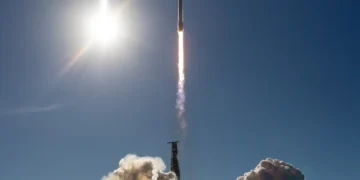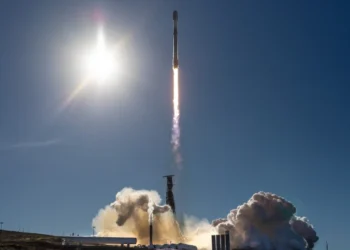Introduction: Microsoft’s Bold Step Toward Climate Innovation
In a groundbreaking effort to combat climate change and reduce its carbon footprint, global technology leader Microsoft has entered into a novel carbon offset agreement. The initiative involves the underground storage of bioslurry — a semi-liquid mixture composed primarily of human and agricultural waste — as a means of capturing and permanently removing carbon dioxide (CO₂) from the atmosphere. The company has signed a multi-year contract with waste management firm Vaulted Deep, aiming to sequester 4.9 million metric tons of CO₂ over a 12-year period.
This innovative carbon removal strategy is part of Microsoft’s broader climate goals, including its ambitious commitment to becoming carbon negative by 2030 and to remove all the carbon it has ever emitted — either directly or through electricity consumption — by 2050.
Understanding the Technology: Bioslurry and Deep Underground Injection
At the heart of the deal lies a relatively obscure but promising climate technology: bioslurry deep injection. Bioslurry refers to a viscous blend made from treated human waste, animal manure, and other organic waste materials. Rather than treating or incinerating this waste — both of which result in CO₂ or methane emissions — Vaulted Deep proposes a cleaner, more permanent alternative: pumping it 5,000 feet underground, far below the Earth’s surface, where it will remain trapped for thousands of years.
How It Works:
- Collection and Treatment: Human and agricultural waste is collected from wastewater treatment plants and farms.
- Conversion to Bioslurry: The waste is processed into a slurry to facilitate easier transport and injection.
- Subsurface Injection: Using drilling technology similar to that in the oil and gas industry, the slurry is pumped into geological formations — typically porous rock layers sealed by impermeable caprock.
- Carbon Sequestration: The bioslurry contains organic carbon that would otherwise decompose and release CO₂ or methane. Underground, it remains anaerobically sealed, essentially locked away from the carbon cycle.
This method allows for a measurable and verifiable reduction in greenhouse gases, with each metric ton injected underground representing a metric ton of CO₂ removed from the active carbon cycle.
The Deal: Microsoft and Vaulted Deep’s Long-Term Partnership
Microsoft’s newly announced deal involves the purchase of carbon removal credits over 12 years, starting in 2026. The company will receive one credit per metric ton of carbon successfully stored underground by Vaulted Deep. The total deal amounts to 4.9 million metric tons of CO₂, one of the largest corporate purchases of carbon removal to date.
According to Microsoft, this deal aligns with its internal carbon fee structure — a system that requires its business units to pay a fee based on their carbon emissions, creating a budget to fund sustainable initiatives like this one.
Why This Matters: The Global Climate Challenge
Carbon removal has become an increasingly critical component of global climate strategies. While emission reductions — such as transitioning to renewable energy and increasing energy efficiency — are vital, scientists and policymakers agree that they are no longer sufficient on their own. The Intergovernmental Panel on Climate Change (IPCC) has repeatedly emphasized the importance of carbon dioxide removal (CDR) to meet the goals of the Paris Agreement and to limit global temperature rise to 1.5°C above pre-industrial levels.
Currently, carbon removal technologies range from natural methods like afforestation and soil carbon sequestration to engineered solutions such as direct air capture and bioenergy with carbon capture and storage (BECCS). However, many of these methods face challenges of cost, scale, and permanence. Microsoft’s venture into bioslurry injection represents a low-cost, scalable, and permanent solution that adds diversity to the carbon removal portfolio.
Vaulted Deep: The Company Behind the Innovation
Vaulted Deep, the California-based startup collaborating with Microsoft, specializes in carbon-negative waste disposal. The company operates under the regulatory framework for underground injection wells established by the U.S. Environmental Protection Agency (EPA). The company claims that its method is:
- Permanently Sequestering: Once injected, the carbon is unlikely to return to the surface for thousands of years.
- Cost-Effective: Compared to direct air capture and other engineered removal technologies, bioslurry injection is considerably cheaper.
- Scalable: Given the vast amounts of organic waste produced globally, the potential scale of this technology is significant.
Vaulted Deep also emphasizes its compliance with rigorous monitoring protocols to verify the integrity of its carbon storage. Sensors track pressure, temperature, and chemical composition to ensure that the underground storage remains secure.
Microsoft’s Climate Strategy: A Broader Perspective
Microsoft’s partnership with Vaulted Deep is part of its comprehensive environmental sustainability initiative. Key milestones in the company’s climate strategy include:
- Carbon Negative by 2030: Microsoft has pledged to reduce more carbon than it emits by the end of this decade.
- Carbon Accounting: The company has implemented advanced carbon accounting tools to track emissions across its supply chain.
- $1 Billion Climate Innovation Fund: Launched in 2020, this fund supports the development of new carbon reduction and removal technologies.
- Circular Economy Commitment: Microsoft is also aiming to be zero waste by 2030 and to reduce water use intensity.
- Green Data Centers: It has invested heavily in renewable energy-powered data centers, already running on 100% renewable electricity in some regions.
The deal with Vaulted Deep complements Microsoft’s other carbon removal initiatives, including investments in reforestation projects, soil carbon sequestration, and direct air capture partnerships with firms like Climeworks and CarbonCure.
The Role of Carbon Credits in Corporate Sustainability
Carbon credits — also known as carbon offsets — play a crucial role in corporate climate strategies. These credits represent a reduction or removal of one metric ton of CO₂ and can be bought by companies to offset their unavoidable emissions. However, carbon credits have faced criticism for lack of transparency and verification issues.
To address this, Microsoft has adopted a rigorous procurement strategy, guided by its Carbon Removal Criteria. These criteria emphasize:
- Permanence: How long the carbon will stay out of the atmosphere.
- Additionality: Whether the carbon removal would have happened without Microsoft’s funding.
- Verifiability: Whether the removal can be independently measured and audited.
- Scalability and Co-benefits: Whether the solution can grow and contribute positively to ecosystems or communities.
The deal with Vaulted Deep, meeting these requirements, represents Microsoft’s effort to lead by example in a marketplace often criticized for greenwashing.
Challenges and Criticism: Is This the Future of Waste?
While Microsoft’s commitment to innovative carbon removal is largely applauded, it is not without scrutiny. Environmentalists and scientists raise important questions:
- Environmental Risks: Could underground bioslurry injection lead to groundwater contamination or seismic activity?
- Regulatory Oversight: Are current EPA guidelines sufficient to manage this new technology long-term?
- Public Perception: How will the public react to the idea of burying human waste underground?
Experts agree that while this method holds promise, continued monitoring, transparent data sharing, and independent audits will be essential to maintaining trust and ensuring environmental safety.
Conclusion: A New Era in Carbon Removal?
Microsoft’s partnership with Vaulted Deep marks a significant step in the evolution of carbon removal technologies. By turning human and agricultural waste into a valuable climate resource, the company is not only innovating in the sustainability space but also helping to normalize unconventional solutions in the fight against climate change.
As climate urgency intensifies and the world looks for scalable, cost-effective ways to draw down carbon, deals like this may become more common — especially as major corporations take increasing responsibility for their environmental impact.
This strategy may not be the silver bullet, but it is undoubtedly a key piece of the puzzle in the global push for a carbon-neutral future.

























